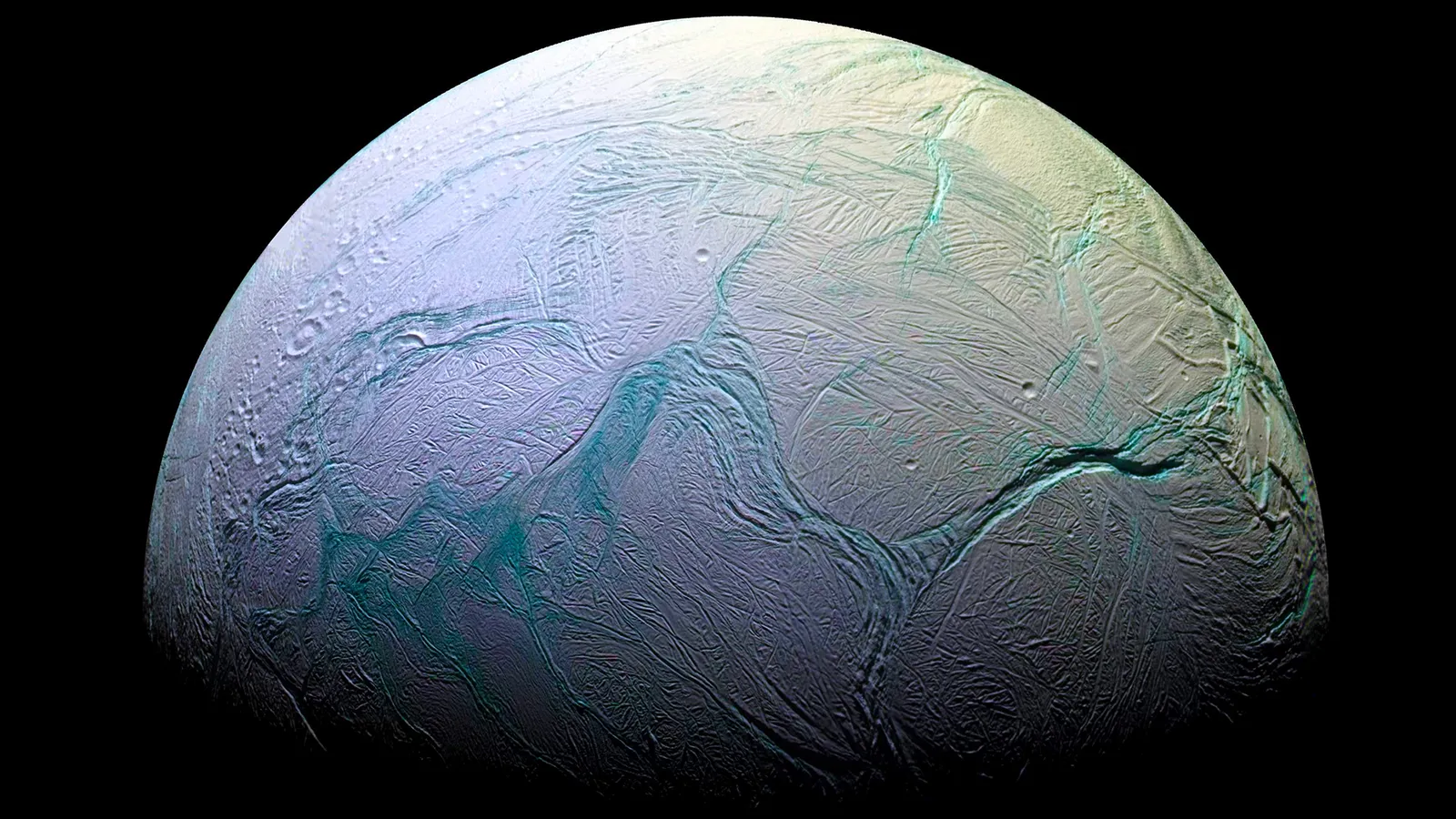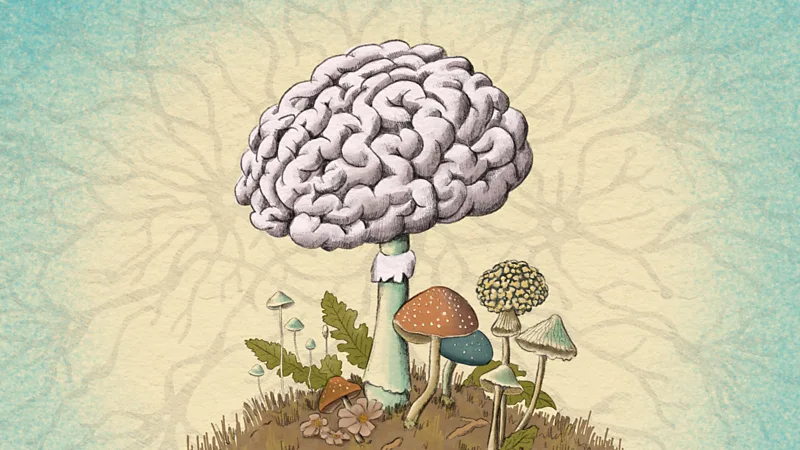Why Saturn's moons have been so hard to find
Astronomers recently announced that they had discovered 62 new moons around the ringed planet Saturn and another has just been added to the list. So, how have they lain hidden for so long?

Ever since humanity began looking skywards, our Moon has stared back at us from its orbit a relatively short distance from our planet. It is the most visible of our Solar System's natural satellites, but it is by no means the only one.
Working out just how many there are, however, is a constant challenge.
In May this year, astronomers announced that they had found 62 new moons orbiting one of the Solar System's gas giants, the ringed planet Saturn. At a stroke, it raised the number of confirmed moons orbiting this distant leviathan – which lies some 886 million miles (1.3 billion kilometres) from the Sun – to 145. It also crowned Saturn as the planet with the most orbiting moons, wresting it from its giant neighbour Jupiter in what has been dubbed the "moon race" by some. And the number of Saturn's moons continues to grow with another new discovery added to the list by the same team just weeks later.
The new moons were located by a team led by Edward Ashton, a postdoctoral fellow at the Academia Sinica Institute of Astronomy and Astrophysics in Taiwan. The discovery took more than two years using a telescope on top of Mauna Kea in Hawaii. But it came after astronomers have been peering at Saturn and its satellites for more than three and a half centuries. Humanity has even sent four spacecraft to Saturn, and still these moons escaped discovery.
So, how did so many of Saturn's moons remain hidden from view? What makes distant moons so hard to find? And how many more might be waiting out there in the blackness of space?
Hard to spot
At last count there were no less than 290 "traditional" moons in our Solar System. However, simply observing a moon does not mean it is officially a moon. Some of the new satellites had been seen before, but there's a lengthy process before the International Astronomical Union officially calls one a moon. Think several years of constant observations.
For centuries of human civilisation, many of our celestial neighbours were too far away for us to discern. The first of Saturn's moons to be discovered was its largest – Titan, a moon larger than the planet Mercury – by the Dutch astronomer Christiaan Huygens in 1655, it was another 16 years bore Jean-Dominique Cassini discovered Iapetus and then later Rhea, Dione and finally Tethys in 1684. It was not until 1789 that the German astronomer William Herschel identified Mimas and the icy moon Enceladus.
Mimas is among the smaller moons in the Solar System. It is the second smallest of 22 planetary-mass moons – those large enough to be rounded by their own gravity and that orbit regularly around a larger planet. Still, with a diameter of 201km (129 miles) it was large enough for Herschel to view it from Earth through a relatively unsophisticated piece of optical equipment.
Other Saturnian moons evaded human observation for far longer. The potato-shaped Hyperion wasn't discovered until 1848, followed some 50 years later by Phoebe, which travels around Saturn in the opposite direction to most other moons.
But it wasn't until the arrival of the space age and modern telescopes that the list of Saturn's moons began to grow considerably. Spacecraft such as the Voyager and Cassini probes were able to add further to the discoveries by viewing Saturn's complex system close up.
Indeed, it wasn't until 1980 that the Nasa spacecraft Voyager 1 spotted an enormous crater on one side of Mimas, caused by an impact around 4.1 billion years ago that nearly split Mimas in two. It has led many to compare Mimas's pockmarked appearance with the Death Star from the movie Star Wars. Voyager also revealed the moons Atlas, Prometheus and Pandora.
Even so, the vast majority of Saturn's moons were discovered relatively recently, since the year 2000.
One reason for this is that the satellites discovered in the early days of astronomy followed certain patterns: they were relatively large and they followed predictable orbits, which astronomers call regular orbits.
An ancient cataclysm might have spun these tiny satellites into the dark
"If you look at the four bright moons of Jupiter, the Galilean satellites, those are called regular moons, and all the giant planets have regular moons," says Brett Gladman, a Canadian astronomer at the University of British Columbia and one of Ashton's colleagues involved in the recent discoveries around Saturn. "And their moons, they're orbiting in the equatorial plane of the planet, just like the rings around the planet. They're thought to have formed in orbit, a flattened disc of gas and dust that formed around the giant planets… the same way our planets formed in orbit around the Sun."
The accepted wisdom, Gladman says, was that if moons formed from the planets near them, they would stay in close proximity and orbit around their equatorial planes – much like planetary rings do.
But it turns out some moons don’t follow this rulebook. The planets also have irregular satellites whose orbits do not follow a predictable path around their host planet's equatorial plane. Their orbits are more elliptical and inclined, ranging further from the planet and often in a different direction to the planet's course around the Sun. Many are also much smaller in size.
For decades, moon detectives on Earth had to use photographic plates to try to find evidence of the Solar System's moons. The smaller they were and the more irregular their orbit, the more difficult they were to observe. But in the 1990s and 2000s, digital photography suddenly changed the way people like Gladman could locate them. Charged coupled device (CCD) sensors in digital cameras were much more sensitive to light than photographic plates or emulsions, meaning much fainter objects could be detected.
However, a new problem arose. CCD sensors were small, so the field of view they could capture was very limited. "The giant planets are pretty big, the region around them where you could orbit the planets – instead of orbiting the Sun – is pretty large," Gladman says. "And when viewed on the sky, they were large enough that nobody could hunt them with CCD cameras.
"In 1997, I discovered the first two of these moons near Uranus by using a camera and that was difficult, but it worked," says Gladman. He adds that the planet's relative distance from Earth made for a relative limited field of view to search.
Then came another breakthrough: CCD mosaic cameras, which bunch a number of CCD sensors in a grid. "That gives you a much wider field of view," says Gladman. "So when that happened, there was an explosion [of discoveries] in the late 90s, early 2000s."
In 2000, Gladman himself had a Saturnian moon field day, using this new technique. "There were 12 I discovered in 2000 with a couple of telescopes," he says. "Large format, multi-CCD mosaic cameras became available on big aperture telescopes. And so suddenly, you could hunt enough sky that it wasn't fishing in the dark finding them."
WHAT COUNTS AS A MOON?
Moon's are natural satellites – usually solid, rocky bodies – that orbit larger objects such as planets. The "traditional" moons are found orbiting the planets of the Solar System (and the dwarf planet Pluto). But astronomers have documented more than 460 moons orbiting asteroids and other objects such as those found in the Kuiper Belt, the ring of icy material that sits out beyond Neptune. Scientists have also discovered much smaller "moonlets" orbiting in Saturn's rings – although some can be as large as a football stadium – and are thought to be the remains of larger moons that were smashed to pieces in the past.
Detecting moons is painstaking work. "In the old days, we would take an image, and then maybe an hour later, another image, and then an hour later, another image of the same offset," says Gladman. Those three images would help show if an object – perhaps a moon – was travelling in a defined direction. "Back in the old days, when the CCD cameras weren't very big, I did this all by eye, you take three digital pictures and just blink them in rapid time sequence and look for a moving object. But the datasets are enormous. Now, that's not feasible to do. We have computer software that now takes the frame, finds all the objects, eliminates all the things that don't move, and then looks for things that move."
The moons left to find are small and reflect only a tiny amount of light, which has forced scientists to use new approaches. The discovery in May involved a technique called "shift stack", which is similar to a multiple-exposure mode on a camera. If researchers think they know where a moon is and what direction it is likely to be travelling in, they can go over this series of images, shifting the moon's position in the frame until the superimposed images stack up. If the shifting and stacking is successful, a faint image of the moon is created.
However, this requires a good idea of the direction the moon might be moving in across the space you have captured. Without that, you suddenly have a lot more space to sift through.
Astronomers believe these problems are worth solving, though. That’s because the recent discoveries – those faint, barely reflecting chunks of rock – offer some tantalising clues into the Solar System's past.
Mike Alexandersen, a post-doctoral fellow at the Minor Planet Center (MPC) who was also involved in the discovery of Saturn's latest moons, says the discoveries will guide our understanding of what formed these moons in the first place. "The reason that they're clustered together, and have similar orbits, is believed to be that there used to be one object that underwent a collision," he says. And then over billions of years, the fragments continued to smash together.
Gladman calls it a "collisional cascade": a series of collisions which cause more and more smaller moonlets. He and his colleagues recently suggested that a relatively recent collision event within the past few hundred million years may have created some of the smallest of Saturn's irregular moons. "These new discoveries that we've announced are firming up the idea that Saturn size distribution is very steep. So, as you go to smaller moons, the number increases very rapidly and much faster than Jupiter," he says. With Jupiter's moons, "things have run into each other and settled".
Alexandersen has carried out a lot of research on the Kuiper Belt: a vast agglomeration of ice-cold debris 20 times larger than our Solar System's asteroid belt. He says that the mapping of some 4,000 objects in the Kuiper Belt has offered some theories into the formation of the planets, and why so many small moons are scattered across the Solar System. "In order to explain that distribution, Neptune must have formed closer to the Sun and then ploughed out through this disk and scattered things all over the place."
An ancient cataclysm might have spun these tiny satellites into the dark, to a point where the gravitational pull of the gas giants was greater than that of the now distant Sun – though Alexandersen points out that the Sun would still exert an influence even at these vast distances. "Exactly where the edge of a stable orbit actually is, is still up for debate," he says. "I believe that some of these newly discovered ones pushed that envelope out a little bit early and one of them has the largest orbit that we've seen so far."
The moons these astronomical detectives are chasing are at the very limits of what current technology can capture – satellites that measure at least a kilometre across. Artificial intelligence may offer a further leap forward. "We may be able to use machine learning AI techniques to give the datasets to a computer and tell it to find the moons," says Gladman. "We're still working on that… it's a challenging thing to do. But just in the last few years, people are starting to make real progress."
In any case, the discoveries show no sign of stopping. Within a few weeks of the announcement of the 62 new discoveries, the scientists had another surprise: they had one more moon to add to the list. "One more moon was announced yesterday that didn't make it into the press release, because we couldn't get the orbit to fit properly," Alexandersen told the BBC. "But we fixed that. So not 62, but 63." That brings Saturn's total to 146.
-bbc







